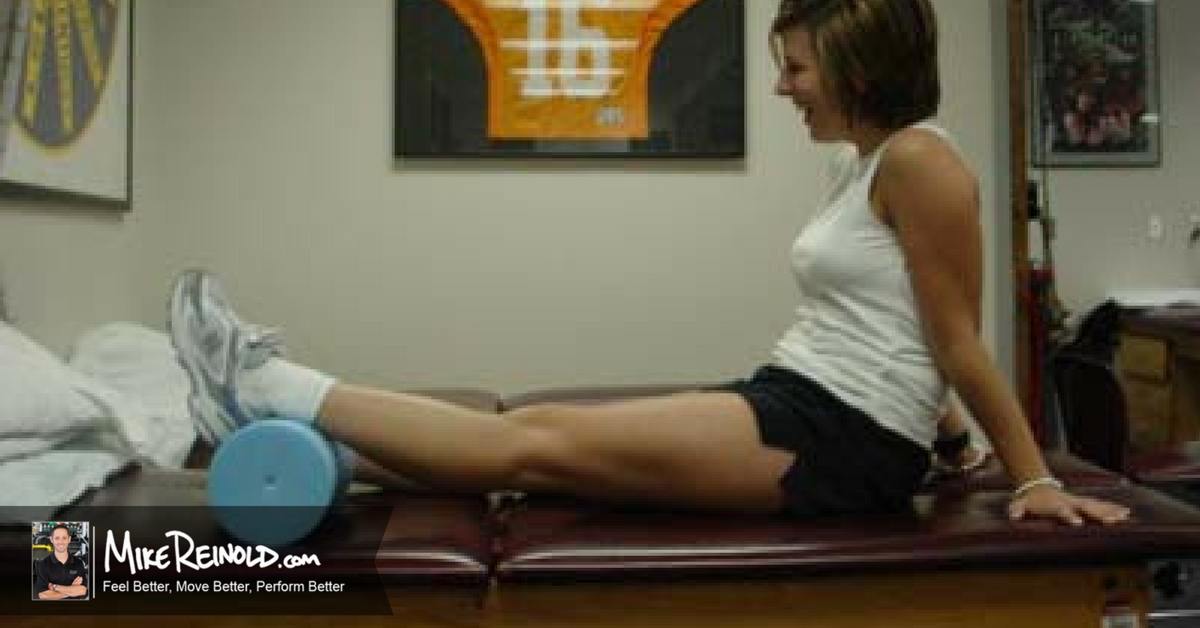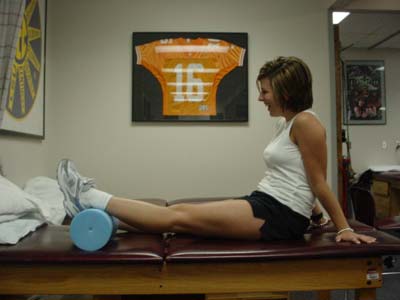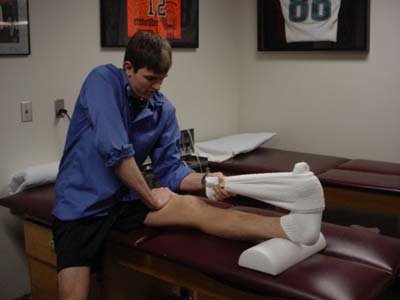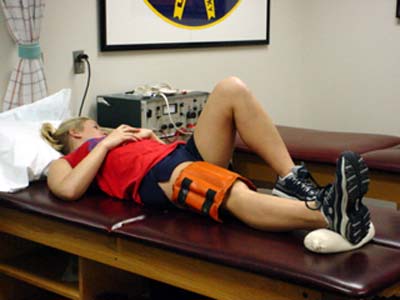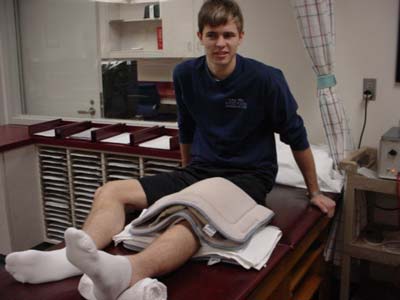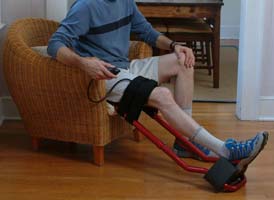Assessing and treating loss of knee extension range of motion is an important component of rehabilitation following any knee surgery. We recently discussed how the loss of knee extension range of motion may be one of the biggest factors associated with the development of osteoarthritis following ACL reconstruction.
The purpose of this article is to review some of the many methods of assessing and treating loss of knee extension range of motion to help maximize outcomes following knee surgery or injury while minimizing long-term complications.
Assessing Loss of Knee Extension Range of Motion
There are many ways to treat loss of range of motion in the knee, however, proper assessment of range of motion is even more important. A certain degree of hyperextension is normal, with studies citing a mean of 5 degrees of hyperextension in males and 6 degrees in females. Simply restoring knee range of motion to an arbitrary 0 degrees is not advantageous.
The most important factor in assessing loss of knee extension range of motion is looking at the noninvolved knee. As simple as this sounds, this can not be overlooked as you need to establish a baseline for what is “normal” in each patient or client.
The first thing I look at is simply grasping the 1st toe with one hand to lift the foot off the table. My proximal hand can stabilize the distal femur. This is a quick and dirty assessment but I always recommend quantifying the available range of motion.
To accurately measure knee extension range of motion, you will need to use a towel roll of various heights to assure the knee is fully hyperextended before taking a goniometric measurement.
Other aspects of assessment that should be performed when dealing with the loss of knee extension range of motion should include patellar mobility, tibiofemoral arthrokinematics, and soft tissue restrictions. Patellar mobility is especially important after ACL reconstruction using a patellar tendon autograft. Any restrictions in patellar mobility can have an obvious correlation with restricted knee extension. Scarring of the patellar tendon can restrict superior glide of the patella and full knee extension.
These assessments will help guide our manual therapy approach to restoring normal arthrokinematics and range of motion of the knee.
Documenting Knee Range of Motion
I took a poll of a large group of students coming through my clinic in the past and found that there was great confusion regarding how we document hyperextension of the knee. Is + or – when defining a numerical value?
Let’s say that someone has a contracture and is sitting in 10 degrees of flexion and is unable to straighten their knee. That would be +10 degrees of flexion, thus has to be -10 degrees of extension. They are on two ends of the spectrum.
Still, using a + or – can be potentially confusing, so I have long taught my students that we should document range of motion using the A-B-C method. Other authors, such as Dr. Shelbourne, recommend this method as well.
- If a person has 10 degrees of knee hyperextension and 130 degrees of knee flexion, it would be documented as 10-0-130.
- If a person has a 10 degree contracture and loss of full knee extension with 130 degrees of knee flexion, it would be documented as 0-10-130.
Using the A-B-C method eliminates the potential for confusion while documenting.
Treating Loss of Knee Extension Range of Motion
There are several ways to improve knee extension range of motion, however, if a person is struggling with this motion I have found that self-stretches, low load long duration (LLLD) stretching, and range of motion devices can be superior to us cranking on an already cranky knee! Allowing gentle, frequent, and progressive load to the knee is usually more tolerable for the person, especially those that are sore or guarded in their movements.
The intent of this article is to discuss some specific independent strategies to enhance knee extension range of motion. Other skilled treatments should focus on patellar mobility, soft tissue mobility, and other aspects of manual therapy for the knee as needed. However, patients will need to perform stretches at home to assure good outcomes.
Self Stretches for Knee Extension Range of Motion
Two of the first stretches that I give patients following surgery are simple self stretches for knee extension. The basic version simply has the patient applying a stretch into extension by pushing their distal thigh. The second and slightly more advanced version has the patient press down on their distal thigh while using a towel around the foot to pull up and simultaneously stretch the hamstrings.
Similar to how we assess knee extension range of motion, you will want to use some sort of wedge under the heel to assure that you are restoring full motion.
Low Load Long Duration Stretching for Knee Extension Range of Motion
For the person that is having a hard time achieving knee extension, my next line of defense is usually LLLD stretching. Several research articles have been published showing the benefit of LLLD stretching in achieving range of motion gains.
I prefer performing LLLD stretching for knee extension in the supine position rather than prone knee hangs (follow the link to learn why). This has always been a more comfortable and thus more beneficial position for me. To perform this exercise, place a towel roll or similar item under the heel to allow full knee extension and then a comfortable weight over the distal thigh.
The purpose of this exercise is to be gentle and to hold the stretch for several minutes. I typically use anywhere from 6 to 12 pounds and hold the position for at least 10 minutes. If the person is fighting against the weight, then it is too aggressive. Lower the weight and you’ll see better results.
Don’t forget that you can apply moist heat to the knee simultaneously for even more benefit.
Devices for Knee Extension Range of Motion
I am also quick to prescribe a range of motion restoration device for people that may be struggling with range of motion or are not moving their knee enough throughout the day. I have tried some of the dynamic splinting in the past but found that many people would rather control and hold a sustained stretch rather than have the brace apply a dynamic stretch.
The two devices I have used and enjoyed are from Joint Active System (JAS) and End Range of Motion Improvement (ERMI).

Both devices allow the patient to apply their own tolerable LLLD stretch at home. This is helpful as frequent movement throughout the day is always beneficial.
Personally, my criteria to use these devices is usually when I perceive the person will self-limit themselves and avoid motion. I will get a device in their hands early so that they can move their knee more at home and have a feeling that they are controlling the restoration of range of motion. We probably resort to using these devices when it is too late and the patient is already too stiff.
These are just some of the many ways to assess and treat loss of knee extension range of motion. Considering how important it is to restore full knee extension after knee surgery, properly assessing early signs of loss of motion and effectively treating the knee to avoid long-term loss of motion is critical.
Learn Exactly How We Evaluate and Treat the Knee



